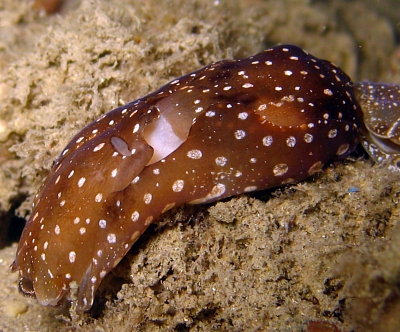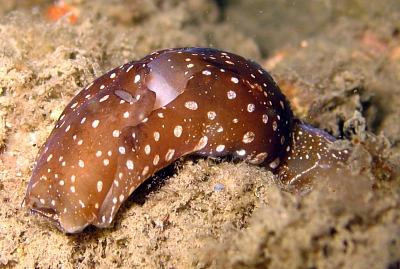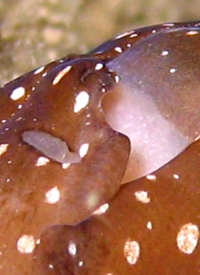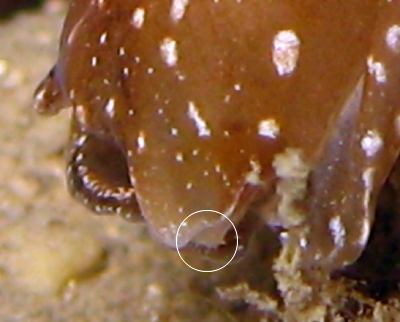A damaged Aglaja tricolorata
September 4, 2008
From: Dominique Horst

Concerning message #21676:
Hi Bill,
It seems that even Aglaja has repulsive chemicals to avoid aggression. This photo shows that even though a first bite can cause quite a lot of damage, the animal survives.
Locality: Cagnes, 4 m, France, Mediterranean sea, 29 August 2008, muddy. Length: 40 mm. Photographer: Dominique Horst.
Kind regards,
Dominique
dominique.horst@wanadoo.fr



Dear Dom,
Thanks for the photos. Like most sea slugs, aglajids have skin glands which deter predators. Two other things I can note in your photos is that the animal is being 'trailed' by another [see your message #21709] and in the close-up alongside I can just make out the sensory bristles which are characteristic of aglajids and occur in clusters on each side of the mouth. They are most obvious in the genus Chelidonura [see C. hirundinina Fact Sheet].
Best wishes,
Bill Rudman
Related messages
-
Re: Aglaja tricolorata 'colour variation'
From: Dominique Horst, August 17, 2009 -
Re: Aglaja tricolorata 'feeding'
From: Dominique Horst, September 5, 2008 -
Aglaja tricolorata 'trailing'
From: Dominique Horst, July 17, 2008 -
Re: Aglaja tricolorata from the French mediterranean
From: Dominique Horst, July 7, 2008 -
Aglaja tricolorata from the French mediterranean
From: Dominique Horst, July 4, 2008 -
Aglaja tricolorata from Malta
From: Patricia Peels, February 1, 2007
